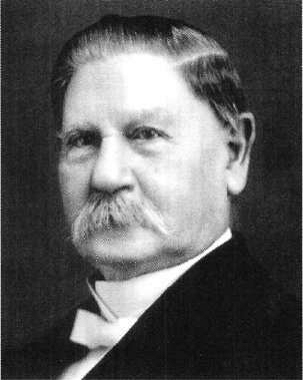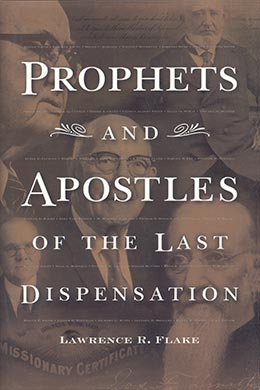Charles William Penrose
Lawrence R. Flake, Prophets and Apostles of the Last Dispensation (Provo, UT: Religious Studies Center, Brigham Young University, 2001), 195–97.

Born: 4 February 1832, London, Surrey County, England
Quorum of the Twelve Apostles: 7 July 1904 (age 72)
Second counselor to President Joseph F. Smith: 7 December 1911
Second counselor to President Heber J. Grant: 23 November 1918
First counselor to President Heber J. Grant: 10 March 1921
Died: 15 May 1925 (age 93), Salt Lake City, Utah
Walking with bleeding feet along a dusty road in Essex, England, a young missionary pictured in his mind’s eye the wide streets and clear streams of Salt Lake City, the Zion he had never seen but had heard others describe in glowing terms. The wheels of his fertile and poetic mind began turning, and to a familiar tune he wrote the cherished Latter-day Saint hymn “O Ye Mountains High.” The missionary’s name was Charles W. Penrose. Even though he was born into a well-to-do London family, he was now alone, serving a mission just one year following his conversion. Charles was the only member of his family to join the Church, and because of this decision his widowed mother refused to have anything more to do with him. He was therefore obliged to leave her and his three sisters behind. One of his descendants wrote: “After having been accustomed to the luxuries of life, it indeed took a brave heart and great faith to leave it all and go out as a missionary without purse or scrip to find shelter and food the best he could, depending entirely upon the Lord. During all this time, in fact throughout his life, he had in his heart the deep sorrow of leaving his mother, who was a widow, and his sisters.” [1]
Each year for ten years Charles hoped to be released from his missionary duties so that he could emigrate to Utah. Finally in 1861 he and his three children and his wife, Lucetta Stratford, whom he had converted along with her family, took passage to America. They crossed the plains by ox team and settled in Farmington, Utah, where Charles, unaccustomed as he was to any kind of physical labor, engaged in farming and log hauling in the summer and school teaching in the winter. In 1864, barely settled after a move from Farmington to Cache Valley, Elder Penrose was called again to serve a mission to Great Britain, the second of four missions he served in that country. The last time he went as European Mission president.
In 1870, at the request of Elder Franklin D. Richards, the Penrose family moved to Ogden, where Charles was employed as editor of a newspaper, the Daily Junction. Thus he began a career for which he was admirably suited and which he pursued for many years, becoming the editor of the Deseret News from 1880 to 1892 and from 1899 to 1907. For a few years he was editor of the Salt Lake Herald, and under President Wilford Woodruff he was appointed assistant Church Historian to Franklin D. Richards. He was a remarkably talented writer, answering eloquently many harsh criticisms of Mormonism, defending valiantly the truths he knew to be divine. He wrote a famous series of tracts, “Rays of Living Light,” which were translated into many languages and used in the worldwide missionary program. In addition to his classic Latter-day Saint hymn “O Ye Mountains High,” he penned the words to many others, including “School Thy Feelings, O My Brother” and “Beautiful Zion for Me.”
In 1904 this brilliant and righteous man was called to be an apostle, and from 1911 until his death in 1925 he served in the First Presidency as a counselor, first to Joseph F. Smith and subsequently to Heber J. Grant. The Improvement Era printed this estimation of Brother Penrose: “Active and devoted, earnest and firm in the faith, he is one of the most remarkable men that the Church has produced.” [2] On Elder Penrose’s ninetieth birthday, an article in the Era stated: “He is one of the truly great men of this day and generation—one of the few leaders in the realm of genius and intelligence, of whom men and women yet unborn will say . . . ‘There were giants in the earth in those days.’” [3]
Notes
[1] Kate B. Carter, comp., Heart Throbs of the West (Salt Lake City: Daughters of Utah Pioneers, 1948), 3:81.
[2] Edward H. Anderson, “Charles W. Penrose,” Improvement Era, February 1912, 344.
[3] “Ninetieth Anniversary of Prest. Charles W. Penrose,” Improvement Era, February 1922, 358; “Pres. Penrose Holds Record as Oldest General Authority,” Church News, 22 July 1961, 16.
